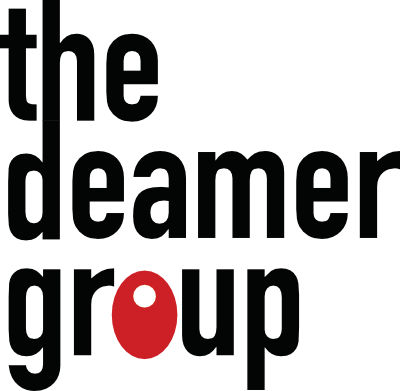Matt Self, author of the article “Workplace Diversity Means Employees of All Ages,” took the words right out of TDG’s collective mouth when he began:
“Let’s play word association. What comes to mind when you think of ‘workplace diversity’?”
Many people would think of the hot-button diversity issues in connection with race and gender. That’s why we want to put the focus on age and generational diversity in the workforce for a moment.
This is a good time for a reminder about the Age Discrimination in Employment Act, the federal law that applies to employers with at least 20 employees and protects employees and job applicants 40 years of age and older from workplace discrimination. It’s been earning its due in the last few years with a large number of cases alleging age discrimination, famously in tech–with industry giant IBM having accused of having laid off more than 20,000 employees over the age of 40 in the last six years–but also a part of retail, health care, energy, food service, and other industries.
Older workers are up against a lot. An AARP infographic displays results from a survey of people aged 45 to 74, of which 64% have seen or experienced age discrimination in the workplace while 58% believe age discrimination begins among workers in their 50s. In the tech sector, fears of age discrimination are particularly prevalent: A 2017 Indeed report found that 43% of older tech workers fear losing their job, largely because tech companies tend to prefer young candidates.
Why hire older workers?
One out of five American workers is older than 55. That’s a large chunk of the workforce! According to the Bureau of Labor Statistics, a full 40% of all Americans aged 55 and older are working or actively looking for work, some because they aren’t ready to stop working and some because they are financially unable to retire (and one-third say they expect financial hardship during retirement).
Seniors are more likely to continue working past age 65 in major metropolitan areas like the Northeast and around Washington D.C. because they recovered better from the recession and offer more jobs.
It’s a great investment for HR to hire older workers who are highly educated in their field and may help their businesses overcome related skill gaps–particularly if your company is located outside of a major metropolitan area. Because the job search is particularly difficult for workers aged 50-55 and over, they tend to be easier to retain.
A variety of fast-growing industries and occupations have significant percentages of older workers. The top five of these were, in 2018:
- technical writers, with 45% older workers;
- real estate appraisers and assessors (39%);
- tax preparers (38%);
- property, real estate and community association managers (39%); and
- construction and building inspectors (39%).
Older workers bring an elusive combination of stability and innovation to the workplace. They offer high levels of not just occupational but worldly experience, time-tested ideas, and organizational skills to draw on in order to help businesses overcome challenges. They can also make excellent mentors and intellectual sparring partners for younger employees.
This all being said, what are companies doing to combat age discrimination and how can you take it to the next level?
Diversity and inclusion (D&I) initiatives
The great news is that employers are widening their view of inclusion and diversity to include workplace culture and benefit programs, with a particular focus on those that benefit older generations of workers.
According to Willis Towers Watson’s 2019 Emerging Trends in Health Care Survey, a growing number of employers are investing in health care and retirement benefits and perks (in addition to employee pay and wellbeing initiatives). Overall, 37% of employers ranked financial priorities, or “health, emergency savings, and retirement” benefits, as their top D&I priority over the next three years.
Belonging and recognition in the workplace
‘Belonging’ is a relatively new HR buzzword that aims to specify the goals of D&I initiatives.
Let’s tap into an excellent LinkedIn article about company culture that explores this concept:
“Diversity and inclusion still matter, but they won’t cut it if you don’t consider belonging as part of the equation. Belonging is the crucial piece of the puzzle, leading to psychological safety and employee engagement. Supportive environments even trigger different responses in the brain, leading to better collaboration and problem solving.”
LinkedIn surveyed employees as to what gave them a sense of belonging at work and found that one of the most major ways, at 59% respondents, was to be recognized for their unique efforts and accomplishments. It’s worth mentioning that this heavily trumped the number of respondents who said they valued having executives or coworkers at their job who looked like them–at 8%. From this one take, we might say that although it certainly helps to have a community of similar faces in the workplace, one’s personal sense of success goes farther to foster a strong feeling of belonging. Being recognized was more important to millennials (60%) than baby boomers (53%), but at more than half it’s still very significant.
Multi-generational workforces
Take an example from the United Neighborhood Houses (UNH) of New York, which supports NYC settlement houses. UNH has found that partnering people of different generations at these neighborhood community and resource centers often results in those involved finding more common ground than they expected. UNH community organizer and trainer Katie Cardwell cites the example of two people–one a middle-school-aged girl with a language barrier and the other a retiree in her 70s–struggling with social isolation. Both strongly benefitted by working together.
Businesses like Caliper, a Princeton, NJ-based global talent-development company, create a synergistic, multi-generational energy by having a millennial and baby boomer employee sit next to each other. Seeing how successfully these workers variously challenge and collaborate with each other, author and workplace expert Lindsey Pollak likens the “intergenerational work experience to a musical remix, where ‘the traditional best practices of the past are blended with modern ways of thinking and getting things done.'”
Talkin’ about my generation…
Steve Burghardt, a professor of social work at the City University of New York, says, “I consider myself to be a very fortunate person to still do what I loved at 27 at 74.”
We spend a large portion of our lives at work. For many, work gives us a sense of purpose. This is particularly true for older workers, many of whom feel they are being edged out of employment when they need a salary, benefits, and community most. You don’t have to look far, however, to see that this demographic brings a lot to the table when it comes to experience, skills, and staying power.

